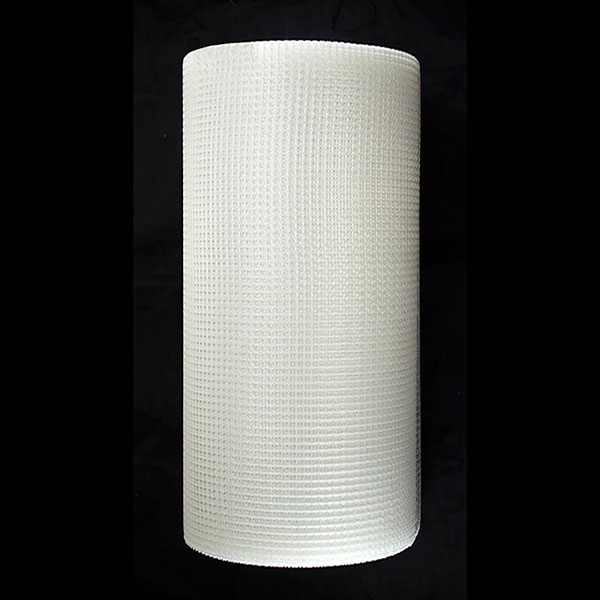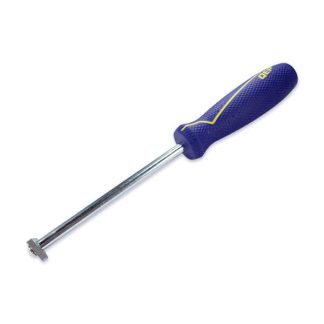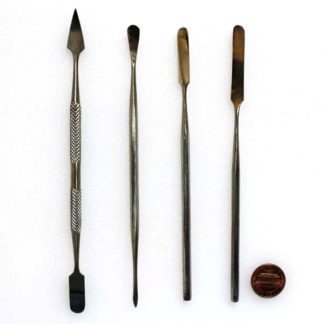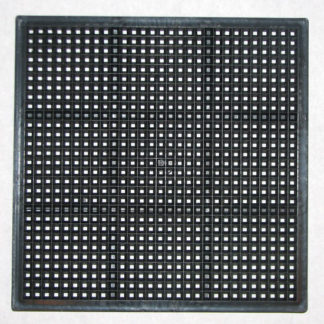Description
Mosaic Tile Mesh is 12 INCHES WIDE and 150 feet long in one continuous UNCUT piece. The mesh is made from woven fiberglass and is the same material that factories use for pre-mounting ceramic tile for rapid installation in walls, floors, and backsplashes. Artists use it in much the same way when laying up large designs, but the mesh is not needed for small mosaic art projects or surfaces such as tables where the tile can be glued directly to the surface.
Fiberglass mounting mesh is most useful for backsplashes and murals and floor medallions and other projects that are large or involve surfaces that can’t be monopolized for long periods of time. In these situations, the mosaic design is laid up on a worktable overs an extended period perhaps involving many different studio sessions, and then the finished design is installed in one session for attaching to the surface and a second session for grouting.
Tip: Even if your design is large, you will probably find it easier to cut the mesh up into 1 ft x 1 ft pieces and lay up your mosaic in these smaller sections. Anything larger than 3 ft x 3 ft is just too heavy and unwieldy to mount on a vertical surface.
Product Specifications
- material: woven fiberglass mesh
- unit weight: 4.3 oz/square meter (standard weight used for tile mounting)
- width: 12 inches
- length: 150 ft
- alkali resistant
- for use with glue or thinset.
- Use a white PVA adhesive such as Weldbond to attach tiles to the mesh.
How to Use Mosaic Tile Mesh
Glue
Use a white PVA adhesive such as Weldbond to attach tiles to the mesh.
To avoid gluing your mesh to your work table, you should use a plastic table or cover the tray in plastic. Construction plastic or coroplast from the building store should work. If you have an old politician or real estate agent plastic advertisement sign from the side of the road you can probably use one of those.
Outdoor and Wet Installation
For outdoor and wet mosaics, it is best to avoid mesh and use mounting paper or mounting tape to temporarily face-mount the mosaic so that it can be pressed into thinset mortar without a layer of mesh and glue on the bottom. This is particularly important when your tiles are small. Mesh can be used in wet locations if glue is used sparingly and your tiles are large enough to safely cover the glue.
If you will be installing the mosaic outdoors or in a wet location, avoid completely covering the bottom of the tile with glue and keep the glue toward the center of the tiles. Leave the outer edges bare to bond directly to the thinset mortar used in final installation. Be careful not to get glue up the sides of the tile. If adhesive isn’t covered with grout, then water can wick underneath the grout over time and cause tiles to pop off. You should inspect the sheet of excess glue by misting it before it is installed. Any traces of glue on the sides and faces of the tile will start to turn white after a few minutes of being misted with water. Use a knife to scrape away any glue residues you see coming up the sides of the tile to face of the tile.
Working Size and Sections
Mesh covered with tile can be heavy and unwieldy, especially when mounted to a wall. You can lay strips of mesh side-by-side if you need a wider piece, but don’t try to vertically mount a one-piece mosaic larger than 3 foot x 3 foot. The standard practice is to lay up the mosaic on 1 foot x 1 foot pieces of mesh and match up the different sections when the mosaic is installed. Floor medallions 3 foot x 3 foot are sometimes made on one piece of mesh, but even though these are mounted horizontally, it still requires that the mosaic be carried on a piece of plywood and slid into place.
Final Mounting
To mount mesh sheets of mosaic to your surface, thinset mortar or adhesive should be spread on the surface with 1/4-inch notched trowel. We “butter” the bottom of the sheet with a little bit of the same adhesive in a thin coat before pressing the sheet into place. Make sure you allow the thinset or adhesive to cure for at least 24 hours before attempting to grout because grouting is a physical process that can easily knock tiles loose from uncured mounting.
Compatibility
The mesh is not used with tiles 3/8-inch or smaller because the holes in the mesh and the ridges on the bottoms of most glass tile make it difficult for small tile to sit level. For small tiles, you should use mounting paper to temporarily FACE-mount the tiles upside down. The product description for our mounting paper explains how that is done.
Use in Concrete Sculpture
The fiberglass mesh can also be used with other materials to make concrete sculptures for covering in mosaic.
How To Make Mosaics
For more advice on designing your mosaic project or cutting and grouting tile, please see our Mosaic Frequently Asked Questions page or our How To Mosaic blog or our Mosaic Information Guide.



